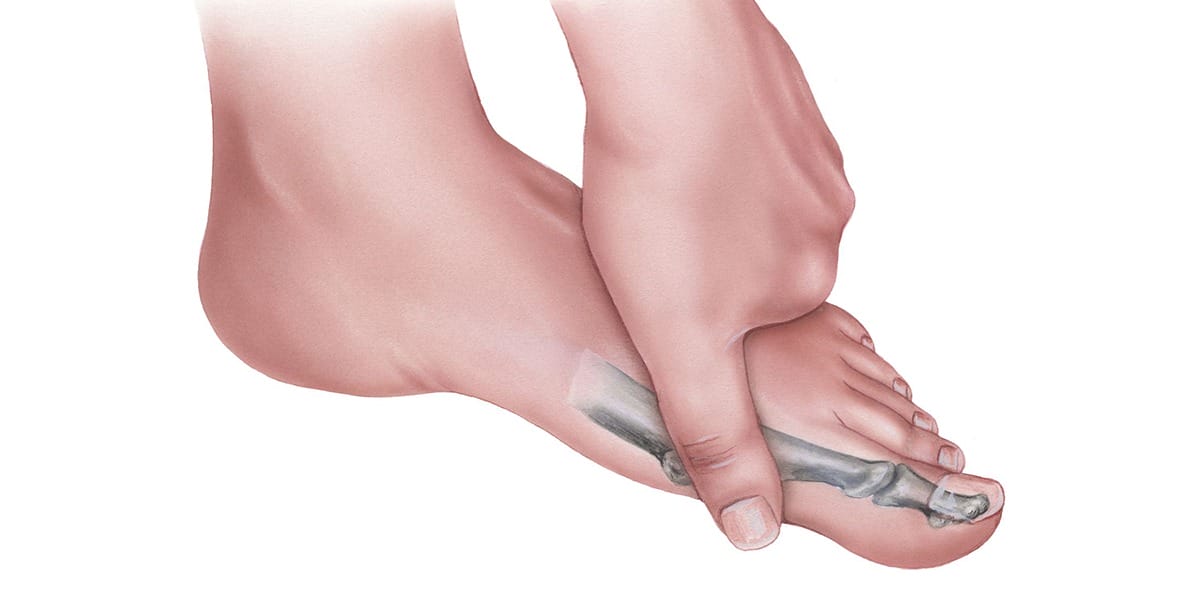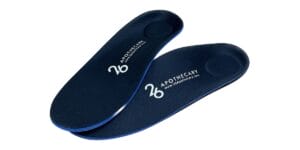Also known as a stiff big joint, hallux rigidus is one of the most common foot conditions. It is characterized by stiffness, pain and limited movement in the big toe joint, making it difficult to walk and perform daily activities. This condition can be caused by various factors, including genetics, injury, ageing, wear and tear from repetitive use and injury to the joint. This can also be caused by osteoarthritis. Hallux rigidus occurs when the protective cartilage cushions the ends of bones and wears down over time.
The most common cause of hallux rigidus is an abnormal foot structure or biomechanic abnormalities. Patients often have flat feet or high arches and are more prone to developing this condition because their foot mechanics put excessive stress on their big toe joints.
Research has also revealed that genetics can contribute to the development of hallux rigidus. Certain genes have been found to increase the likelihood of individuals developing osteoarthritis, including in the joints of their big toes.
Symptoms of hallux rigidus include pain and stiffness in the big toe joint, swelling around the area, difficulty walking or running, and a noticeable bump on top of the foot. These symptoms may worsen over time if left untreated.
Can Hallux Rigidus Be Prevented? Key Steps for Reducing Your Risk
There are important steps people may take to lower their risk of getting hallux rigidus, even though there is no guaranteed way to prevent this condition. The most frequent recommendations that our podiatrists always give to patients are as follows:
The initial step towards preventing hallux rigidus is maintaining a healthy weight. This is paramount as excessive weight exerts additional pressure on the joints, particularly the big toe joint, resulting in heightened wear and tear over an extended period. By embracing a well-balanced diet and engaging in routine physical activity, individuals can effectively manage their weight and alleviate the strain on their joints.
The subsequent step involves the choice of appropriate footwear, which bears considerable significance in preventing hallux rigidus. It is imperative to opt for shoes that provide ample support and cushioning, as they play a crucial role in facilitating the uniform dispersion of pressure across the entire foot, thereby reducing strain on the metatarsophalangeal joint. It is particularly crucial to abstain from wearing high-heeled shoes or those with constricted toe boxes, as they can exacerbate symptoms or contribute to advancing this condition.
The next step is trimming toenails straight across and keeping them at an appropriate length, which prevents ingrown toenails that may lead to inflammation or injury of the big toe joint.
Lastly, avoiding repetitive trauma or excessive strain on the feet can also help prevent hallux rigidus. This includes activities such as running on hard surfaces or participating in sports that involve frequent pivoting motions. Engaging in low-impact exercises like swimming or cycling can benefit overall foot health.

Non-Surgical Treatment Options for Hallux Rigidus: What You Need to Know
Although surgical intervention may be deemed necessary in severe cases, various non-surgical treatment alternatives exist that can effectively mitigate the symptoms of hallux rigidus and enhance an individual’s functionality.
One of the most common non-surgical treatments for hallux rigidus is using orthotics or shoe inserts. These devices support the foot and help distribute weight evenly, reducing pressure on the affected joint.

Another non-surgical option is medication management. Nonsteroidal anti-inflammatory drugs (NSAIDs) can help reduce pain and inflammation associated with hallux rigidus. Corticosteroid injections may also be used to provide temporary relief from symptoms.
It is important to note that while these non-surgical treatment options can provide relief, they may not address the underlying cause of hallux rigidus. Therefore, it is essential to consult with a podiatrist who specializes in foot conditions for an accurate diagnosis and appropriate treatment plan.



